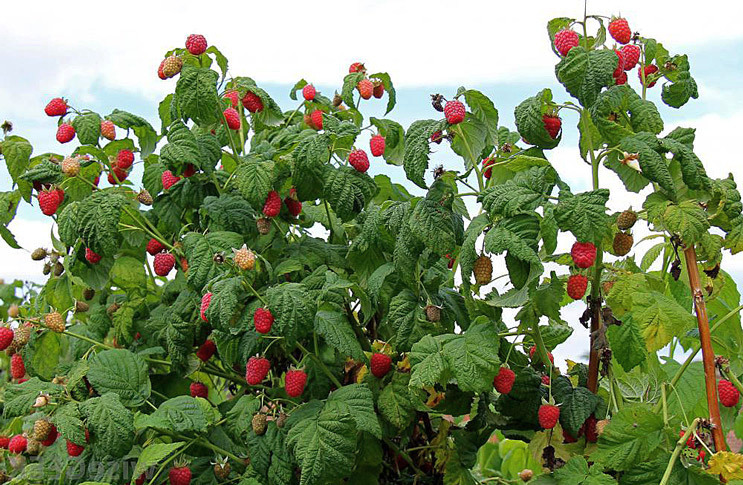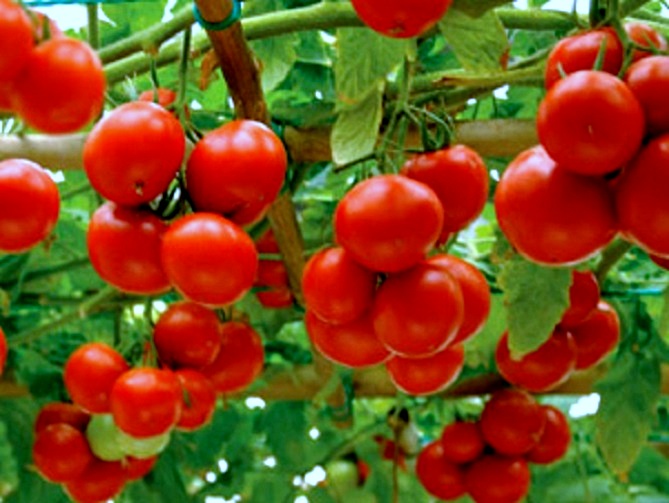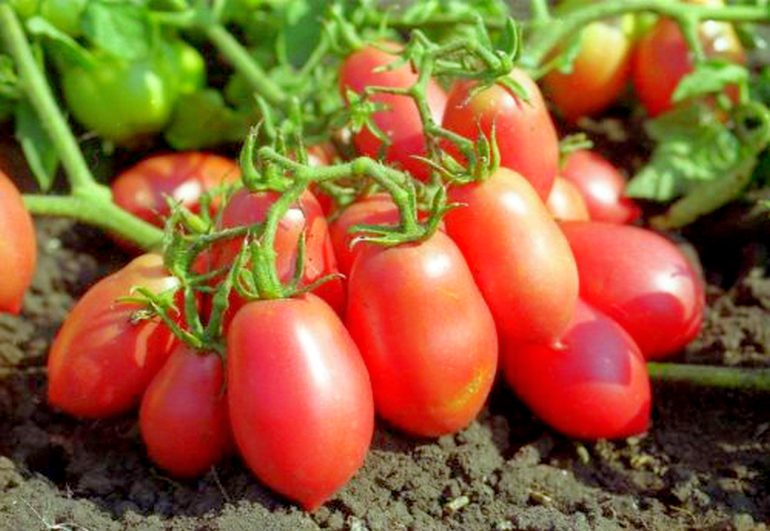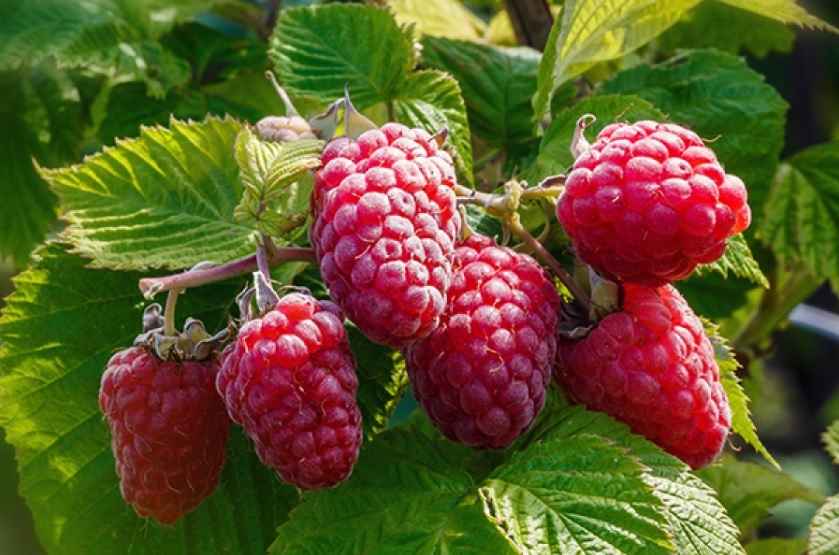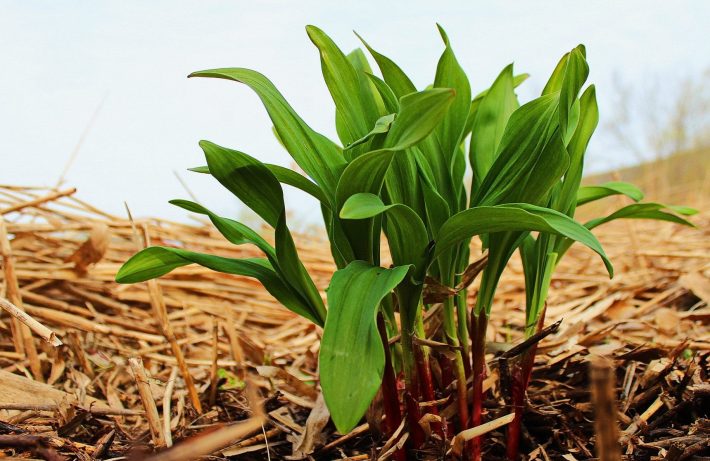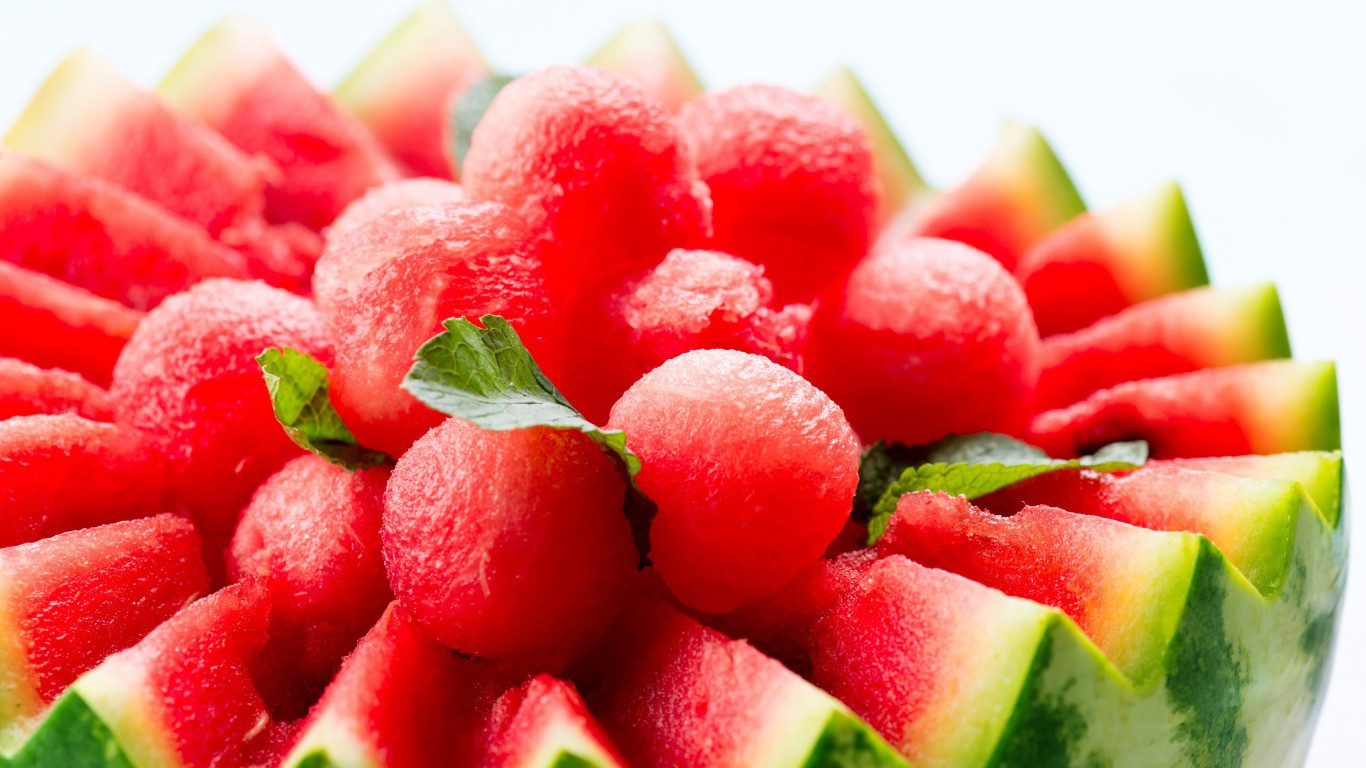Content:
Raspberry Krasa Russia is not uncommon in domestic homestead and summer cottages. Almost any gardener has heard about her.
The variety has proven itself in the best way - the beauty of its fruits is optimally combined with high yields. This type of raspberry is grown in most regions of Russia. The bush is equally well resistant to heat and frost. The variety is propagated by side shoots, as well as by seedlings.
Description
The repairing bush of raspberry Kras of Russia, in accordance with the description of the variety, is not too tall - it grows only one and a half meters high. An adult, strengthened plant usually does not need a garter, but young plants, when they reach a height of 80 cm, should still be strengthened.
Ripening of this varietal raspberry begins in the middle of summer and lasts almost until its end. At this time, cone-shaped fruits with a rich crimson color are formed on the bush. The fruit has a thin skin and very juicy pulp. The berry weighs 2-4 g, and the length is about 2 cm.
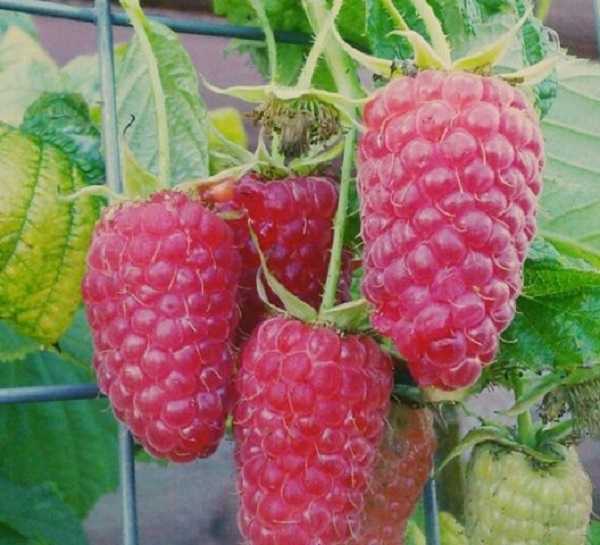
Raspberries of this variety are striking in their size.
The yield that the variety gives is very high. It is enough to plant a few bushes of raspberries for the berries to last until the next season. On average, 4 kg of ripe berries can be harvested from 1 plant per season. Raspberry Russian Beauty (Beauty of Russia) is often planted on an industrial scale.
The berries ripen very quickly - harvesting should be done at least once every two days. Otherwise, the fruits crumble. Fresh berries are stored for a short time - only two days, but they are excellent for freezing and processing.
The described variety of berries is practically unaffected by insects and fungal diseases. A seedling of this variety will be an excellent choice for those who have never had to grow raspberries before. The shrub is not capricious, requires minimal maintenance and grows well.
Summarizing the above, the following advantages of the Kras of Russia raspberry can be distinguished:
- large berries;
- sweet taste;
- bright aroma;
- resistance to temperature extremes;
- fast flowering;
- fast fruiting;
- resistance to most diseases and pests;
- unpretentious care.
Choosing a landing site
An interesting characteristic of the Beauty of Russia is that, unlike many other berries, it can be planted with other similar shrubs. So, she gets along well in close proximity to blackberries and currants.
Important! When planting a varietal species of raspberry Krasa Russia next to other plants, it is imperative to maintain a distance of at least 70 cm. This is due to the rapid growth of the roots of the bush, which can cause many inconveniences.
When choosing a landing site, you should focus on two main points:
- having the sun for most of the day;
- wind protection.
The ideal option would be a well-lit area near a house, outbuilding or fence.
Care
Despite the fact that raspberries Russian Beauty does not belong to picky varieties, she still needs some care.
Landing
Raspberry planting can be carried out in spring or autumn. Experts insist that the autumn option of planting plants in open ground is more preferable. During the winter, raspberries have time to get stronger, as a result of which in the summer they gain color in the shortest possible time.
Spring disembarkation is also practiced. But in this case, so that the ripening period of the berries does not move forward, one should be very picky about the choice of seedlings. They must be strong, beautiful, with a well-grown and healthy root system. The presence of spots and plaque on the roots is unacceptable.
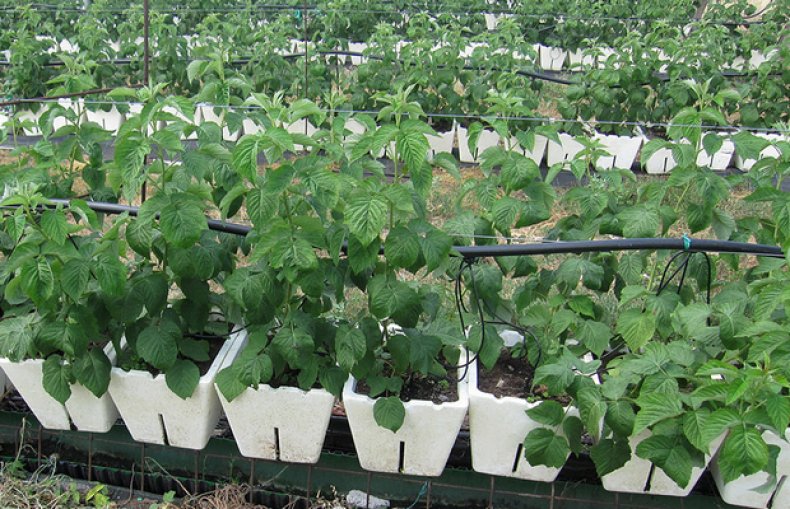
Raspberry seedlings should look healthy
Landing in both cases is carried out in the soil previously loosened by the trench method. The depth of the trench should be about half a meter. Ash, river sand, compost are laid in it, and only then a raspberry bush is immersed and its root system is covered with earth.
Important! When planting plants, the lower branches should not be allowed to lie on the ground. If this happens, they should be removed.
At the end of planting work, the seedlings should be watered abundantly with a weak aqueous solution of superphosphate.
Top dressing
The use of fertilizers is an integral part of raspberry care. The very first top dressing of the season is done in early spring before the plant begins to bloom. The Beauty of Russia is fed with a mixture of superphosphate and potassium sulfate diluted in water. At the end of the procedure, the ground under the bushes is mulched with sawdust or straw.
Re-feeding is done in the fall. In this case, nitrogen-based fertilizers are optimal.
Watering
Raspberry Krasa Russia does not tolerate excess water well.
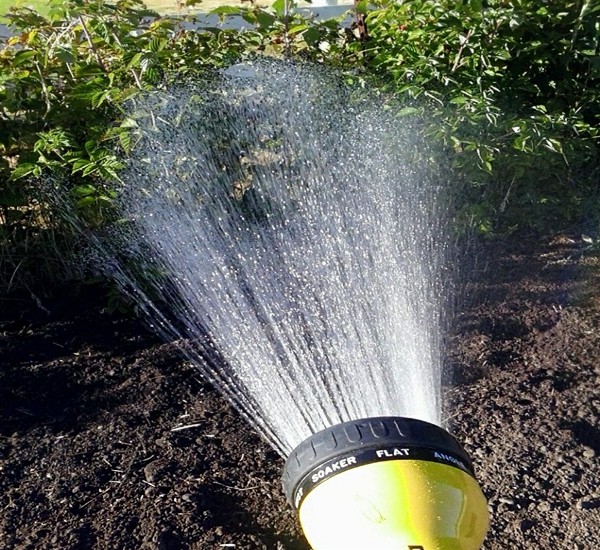
Water raspberries sparingly
If the plants receive excess liquid, the risk of rot and fungus formation increases significantly. In this regard, it is recommended to add water to the ground as it dries. Even in the driest summer, the number of waterings should not exceed two times during the week. As a rule, raspberries are watered once a month or even less often.
Pruning
Without timely pruning of the shrub, it is impossible to provide optimal care for the raspberry tree. This manipulation is necessary to prevent overgrowth of plants. When raspberries have too many shoots, all the nutrients from the soil go to their growth, and not to the berries. As a result, the yield decreases.
Shrub pruning should be started from the second year after planting. The first step is to remove last year's shoots, which have already managed to bear fruit. So, new shoots will grow faster and get more strength. Pruning should be done immediately after bud break.
You can't do without pruning in the fall. This time, all old shoots are cut off, leaving only new ones, which should be prepared for winter before the onset of cold weather.
Disease protection
If properly cared for, raspberries will remain immune to most diseases common to the berry as a whole. But if the summer turns out to be rainy, it will be problematic to avoid gray rot and brown spot if you do not carry out a number of preventive procedures.
Colloidal sulfur in the amount of 30 grams, diluted in 10 liters of water, is perfect for spraying in the fight against gray mold.
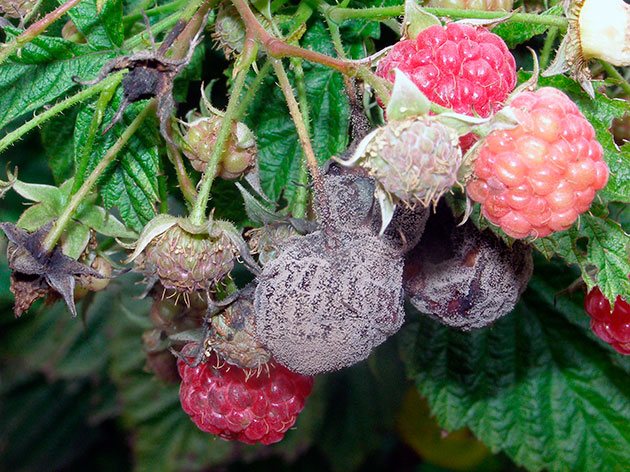
Raspberries infected with gray rot look not at all appetizing
As for brown spot, this disease is determined by the appearance of purple spots on foliage and stems. Most often, the pathology begins its development in the middle of summer and by autumn it affects the entire plant. The fight against it will be effective if Nitrafen and Fitosporin are applied in a timely manner (the compositions will need to be diluted in water in accordance with the instructions).
Somewhat less often, with insufficient care, the beauty of Russia can be struck by a spotted mosaic or chlorosis. With mosaic, dark and light spots appear on the leaves, and chlorosis is manifested by an unexpected yellowing of the foliage of the bush in the middle of summer. Both problems inevitably lead to a decrease in the yield of the raspberry tree. These diseases are not cured. Affected bushes should be completely eliminated.
Protection against harmful insects
There are two pests that can harm the Krasavitsa Rossii raspberry variety. We are talking about the raspberry beetle and the raspberry weevil.
Raspberry beetle larvae usually find their place not only on leaves, but also on berries and inflorescences, causing serious damage to them. To prevent the appearance of this pest, you should regularly loosen and dig up the soil. And before the beginning of the flowering period of raspberries, it is recommended to process the bushes with potassium permanganate. For a standard ten-liter bucket, five grams of the composition will be enough.
The main harm of the raspberry weevil is that it gnaws at the stalks and lays its eggs in the inflorescences. Both processes seriously reduce the yield of the raspberry-infected plant. To combat the weevil, the Iskra-M drug, or rather its aqueous solution (1 g of the drug per 1 ml of water), helps well. Plants should be processed after each harvest.
Somewhat less often, the variety is attacked by a spider mite. Its presence can usually be understood by the appearance of white spots on the leaves. The harmful insect feeds on sap from foliage. As a result, the latter begins to curl up and eventually falls off. In this case, Karbofos will be the best solution to the problem.
Preparing for the cold
Despite the fact that the Beauty of Russia is resistant to subzero temperatures, it is possible not to cover it only if there are no extremely frosty winters in the region. If a fruit and berry crop is grown in Siberia or the Far East, you cannot do without additional shelter.
The Kras of Russia variety can be grown in different climatic conditions, therefore, for such a large country like ours, it is best suited. The Russian Beauty did not receive wide distribution abroad. But this fact does not detract from all its undoubted merits. It's just that Western breeders have no less interesting developments and the fruits of many years of work, which they are actively promoting in their countries.
